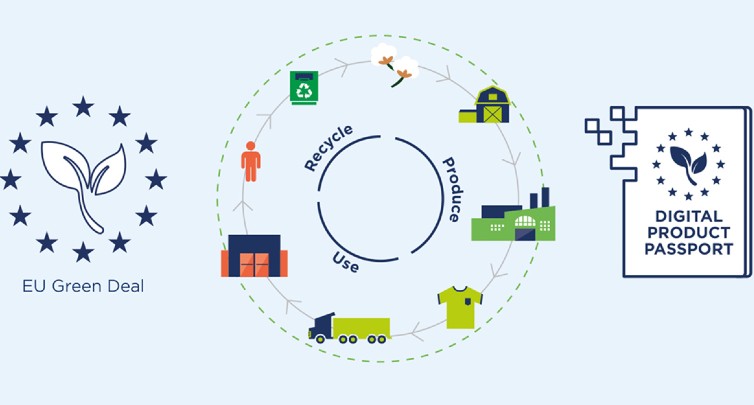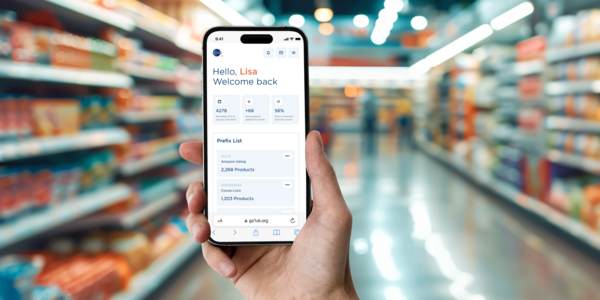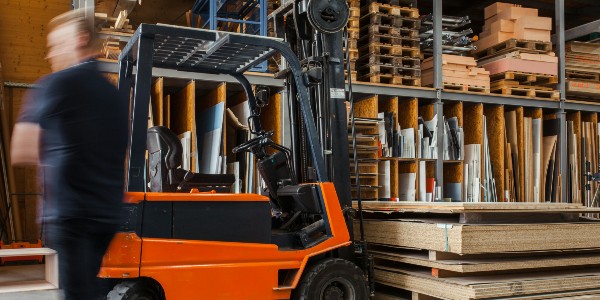December 03, 2024
The UK construction industry, a cornerstone of the economy, is undergoing a digital transformation, reshaping how buildings are designed, constructed, and maintained. At the heart of this shift is the growing demand for standardised, interoperable data. New digital legislation is set to revolutionise information sharing across the construction and metals industries, with digital product passports (DPPs) playing a pivotal role.
Rachel Heaton, GS1 UK’s engagement manager for construction, joined Alex Small, digital platforms and innovation lead at Tata Steel UK, and Kevin O’Grady, Director of Kognitive, at the UK Metals Expo to discuss these changes and how businesses can stay ahead. Here's a summary of the key points.
The data disparity challenge
The construction industry has long struggled with data fragmentation, with stakeholders often working in silos and using incompatible systems. This lack of standardisation leads to inefficiencies, errors, and delays, causing significant cost and time implications.

Consider a scenario where a contractor orders the wrong materials or a designer specifies a product incompatible with the building’s systems. These issues, arising from poor data management, reduce operational efficiency, harm reputations, hinder sustainability efforts, and jeopardise safety.
Data fragmentation undermines traceability, making collaboration, informed decision-making, and circular economy initiatives difficult.
GS1 standards offer a solution, enabling the identification, capture, and sharing of interoperable data and, for over 50 years, have helped industries such as retail and healthcare drive efficiency and embrace new commitments.
Harnessing the power of GS1 data carriers
GS1 standards provide a universal business language. In construction, three key data carriers are transforming the industry by enabling the seamless flow of trusted data across the entire supply chain.
Linear barcodes: Using Global Trade Item Numbers (GTINs), these codes provide fast and accurate identification of materials and products. Each item receives a unique identity, ensuring consistency across systems and stakeholders. This allows businesses to efficiently track materials like bricks, beams, and tools, improving inventory management and logistics.
RFID (Radio Frequency Identification): Building on GS1’s unique ID system, RFID technology embeds this identity in tags that can be scanned remotely. This enables real-time tracking of assets and materials, even in challenging environments. When linked to Global Location Numbers (GLNs), stakeholders can pinpoint exact locations on-site, in buildings or in warehouses, enhancing inventory control and asset management.
QR Codes: These codes create a direct link between physical items and their digital counterparts. Scanning a QR code with a mobile device provides instant access to essential product data, such as specifications, safety instructions, or maintenance logs. Each QR code is tied to a unique ID, offering precise traceability and improving site management and compliance.
These GS1 data carriers enable rapid, universal assignment of unique IDs that work across platforms and providers, while GLNs further link IDs to physical spaces, ensuring seamless data flow.
DPPs: a new era of product transparency
DPPs are set to become a crucial tool in construction, with full implementation expected by 2027. These electronic records will facilitate the efficient sharing of product data between businesses, consumers and regulators.

DPPs will provide structured details about product features, material origins, and production processes, supporting regulatory compliance, sustainability certifications, and informed decision-making.
DPPs require interoperable unique identifiers to facilitate access to accurate data. Globally recognised GS1 standards can serve as these identifiers, ensuring transparency, regulatory compliance, and accessibility of data for sustainability and circular economy goals.
Although DPPs fall under the EU’s regulatory framework, any UK business operating or trading in the single market will need to comply.
The construction products regulation (CPR)
The EU’s revised Construction Products Regulation (CPR), which has guided high-quality construction product standards since 2011, may accelerate DPP adoption. It introduces a product database and digital DPPs, enabling comprehensive lifecycle data tracking. The CPR revision also includes a common data dictionary and a digital language to ensure consistency and accessibility across stakeholders.
Digital logbooks
Kognitive is pioneering the use of Digital Building Logbooks, which provide transparency and full data availability to a range of stakeholders, including property owners, tenants, investors, and public administrations.
In construction, digital logbooks replace traditional paper logs, offering a more efficient, real-time method of tracking and documenting activities related to safety, equipment, personnel, materials, and project progress.
GS1 data carriers play a crucial role in powering these logbooks, providing unique identifiers that link data on materials, assets, and locations. This improves product authenticity, material tracking, and compliance monitoring, supporting sustainability and regulatory adherence, while streamlining procurement, contracting, and payments.

Building information modelling (BIM)
Integrating GS1 standards with Building Information Modelling (BIM) enables smarter design and construction.
GS1 standards support seamless data exchange across different BIM tools, reducing errors and improving project timelines.
With detailed product data, including performance and environmental impact, designers can make informed decisions, driving sustainability and efficiency throughout the building lifecycle.
Delivering a data-driven future
The benefits of standardised data in construction are clear, but challenges such as resistance to change, data quality issues, and interoperability concerns persist. Overcoming these requires collaboration, education, best practices, and infrastructure investment. Standardised data improves quality control, safety, sustainability, and cost-efficiency—essential for a more resilient built environment.
As the construction industry embraces digitalisation, data standardisation will unlock new opportunities for innovation, efficiency, and sustainability, paving the way for a future where data shapes a better tomorrow.



